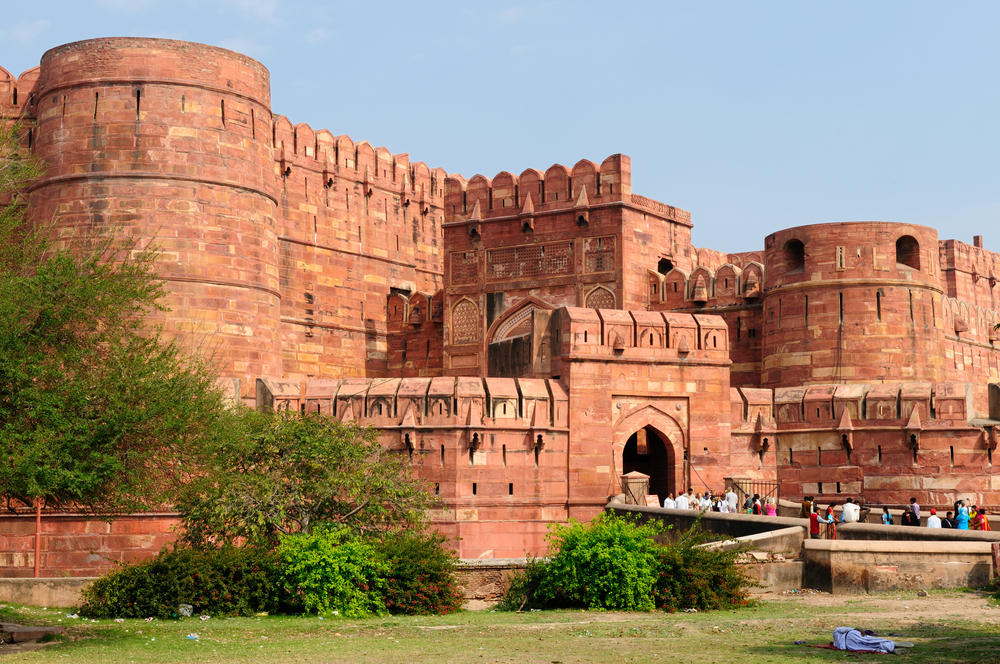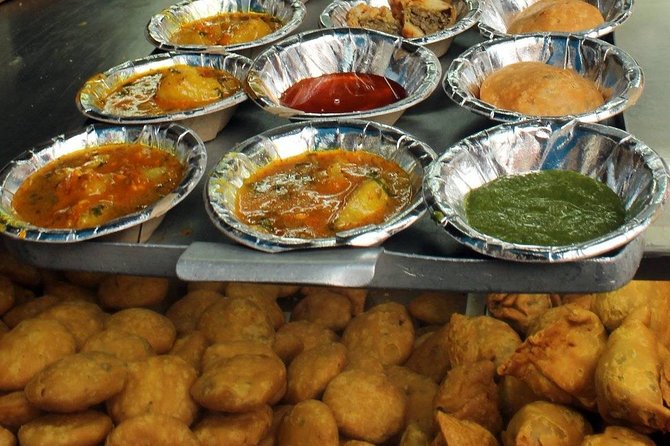
Golden Triangle With Wildlife
A classic 9 day itinerary combining the Golden Triangle and a Tiger safari in Ranthambore. The tour begins in the capital city, Delhi, and then goes to Agra, the city of the Taj Mahal, before continuing to Ranthambore, one of the best known Tiger Reserves in India. The tour finally ends in Jaipur, the city that arrays a pink carpet to all its visitors. This classic itinerary, combines India’s famous Golden Triangle with a wildlife safari.
- Tour Duration: 8 Nights / 9 Days
- Places Covered: Delhi(2) > Agra(2) > Ranthambore(2) > Jaipur(2)
-
Day 1: Arrive Delhi
Your Golden Triangle with wildlife tour begins with your arrival at the Delhi International Airport. At the airport, you will be received by a Trans India Holidays representative and he will escort you to the hotel and help you with the check in formalities. Delhi : The journey starts from the capital city, Delhi, an energetic city, with a unique blend of the ancient and the contemporary era. Delhi has two visible parts: New Delhi, the city created by the British in 1911 as the Imperial capital of India and Old Delhi considered as the Muslim capital of India between the 17th and the 19th century. There are at least eight cities on the location of the modern Delhi, among which Indraprastha is one of the first recognized settlement, highlighted in the epic Mahabharata over 3000 years ago. Nevertheless, Delhi has always been one of the major cities in the northern region of the subcontinent. Overnight in Delhi.
-
Day 2: In Delhi
After breakfast, get pick up from your hotel and proceed for a guided sightseeing tour of Old & New Delhi. Tour includes visits to the following places of interest: Red Fort: A UNESCO World Heritage Site, the red-sandstone structure dates to the 17th century is one of the fine specimens of Mughal architecture. Set along the Yamuna River, the octet shaped fortress is spread over 2.4 kms in the perimeter. The highlights of the fort are Diwan-e-Am (Hall for public audience), a Rang Mahal (a water-cooled apartment of royal ladies), Pearl Mosque, constructed of white marble. Jama Masjid: Among the country’s major mosques where thousands offer their prayers, The Jama Masjid towers over the old Delhi city of Shahjahanabad. It is another of the architectural extravaganzas of the Mughals. Chandni Chowk (Silver Street): Set in the heart of Old Delhi, the ‘moonlit square’ as the name translates to, was designed Jahanara Begum, Shah Jahan’s beloved daughter. It was the residence of the well-to-do families of the Mughal times. It is now known as the shopping hub for textiles, electronic goods, etc. The famous Paranthawale Gali here has a reputation for mouth-watering paranthas. The famous gold market, Dariba Kalan is also situated here. Raj Ghat: The memorial of Mahatma Gandhi, the father of the Nation, the Raj Ghat is set on the banks of Yamuna River. The elementary square platform of black marble is set amid sprawling greenery. India Gate: A 42-metre high arch built in 1931, India Gate was formerly called the All India War Memorial. Dedicated to the memory of the 90,000 soldiers of the Indian Army who died in World War I, the walls of the arch have names of the warriors are engraved. Also on the site is the eternal flame, honor the Amar Jawan (Immortal Soldier). Rashtrapati Bhavan (President’s House): The authorized residence of the President of the country is one of the architectural splendors of India. Formerly, it was the official residence of the Viceroy during the British Raj. It was designed by Lutyens, the British Architect and is an impressive view. Humayun’s Tomb: A UNESCO World Heritage Site in India, the Humayun’s tomb is the mausoleum of the Mughal Emperor Humayun. It was built by his widow Haji Begum nine years after the death in 1565-66. The garden tomb is said to be the inspiration behind the ‘wonder of the world’ Taj Mahal and is a masterpiece of architecture. Qutub Minar: Built by the Muslim King; Qutab–ud–din Aibak in 1199 A.D. The Minar (tower) is 72.5 meters tall and its base is a mosque. The archaeological complex is one of the world heritage sites listed by UNESCO. Overnight stay in Delhi.
-
Day 3: Drive Delhi to Agra (220 kms/04 hrs)
You will be met by one of our representatives who will assist you with the check-out formalities. You will then start your trail to Agra, the next stop on your Golden Triangle and wildlife tour. The drive from Delhi to Agra will be via the new Yamuna Expressway, one of India’s finest highways. On your arrival, check in at the hotel and spend the rest of the afternoon relaxing and enjoying the hotel facilities or exploring Agra on your own. Overnight at the Howard Park Plaza in Agra.
-
Day 4: In Agra
The day begins with an early sunrise visit to the Taj Mahal. Return to your hotel for Breakfast, after which , continue the sightseeing, visiting the Agra Fort and the Itmad-ud-Daulah. Overnight at the Howard Park Plaza in Agra.
-
Day 5: Drive Agra to Ranthambore (280 kms/06 hrs)
Depart Agra for Ranthambore, your next stop on your Golden Triangle and Wildlife tour, enroute stopping at Fatehpur Sikri, for a guided tour of this ancient capital. After visiting Fatehpur Sikri, continue drive to Ranthambore. Ranthambore : The Ranthambore National Park is one of the major illustrations of the Project Tiger's conservation in Rajasthan. The Ranthambore National Park covers an area of over 400 sq. km. It has many sharp cliffs enfolding a route of lakes and rivers. The 10th century Ranthambore Fort stands as a silent watchman on one of these hills. This National Park is a combination of the fortified forest and the open chaparral land. The Ranthambore National Park is naturally a dry deciduous type of forest. Dhok is the most noticeable tree in the forest. Since, Ranthambore is a tiger reserve, glimpsesof tigers are very common in this area, apart from that, the park has a few panthers too. Kachida Valley is known to be the best place to have a glimpse of these exclusive cats. One can also find marsh crocodiles, hyenas, jungle cats and the sloth bears. The avian population includes the black storks, quails, Bonelli’seagles; spur fowls, crested serpent eagles and painted storks. During the winters, there are a lot of migratory birds in the forest, including a different variety of ducks. The National Park is well known for wildlife photography. Wildlife safari’s in Ranthambore are conducted in jeeps. On arrival in Ranthambore, check in at the jungle lodge. Overnight at the Tiger Den in Ranthambore.
-
Day 6: In Ranthambore
Morning and evening game drives into Ranthambore National Park. The morning Safaris are usually from sunrise to about 10.00 am , and the afternoon / evening safaris are from 3.00 pm to sunset. Overnight at the Tiger Den in Ranthambore.
-
Day 7: Drive Ranthambore - Jaipur (180 kms/03 hrs)
After another early morning game drive in Ranthambore National Park, continue you tour on to Jaipur, the city that arrays a pink carpet to all its visitors. It is the capital of Rajasthan, and is known as the “Pink City” because of the pink tinted constructions in the old city. It is situated on a dry lake bed, bordered by barren hills vanquished by forts and broken walls. The city was found in 1727 by Maharaja Jai Singh II, who wanted to be in the good books of the then ruling Mughals. He positioned the city with rectangular blocks according to early Hindu architecture. It is a great city for shopping. On arrival in Jaipur, check in at the hotel. Overnight at the Shahpura House in Jaipur.
-
Day 8: In Jaipur
A full day of sight seeing tour in Jaipur includes the following places of interest: Hawa Mahal (Palace of winds), City Palace, Jantar Mantar (Observatory), Amber Fort - Overnight at the Shahpura House in Jaipur.
-
Day 9: Drive Jaipur to Delhi (250 kms/05 hrs) and depart Delhi
Start your return drive from Jaipur to Delhi, enroute stopping for tea and refreshments at the Neemrana Fort Palace, one of India’s most beautiful and historical heritage hotels. After a short break, continue your drive to Delhi’s International airport in time for your flight back home.

Date & Price
Price
| Period | Standard |
|---|---|
| Valid from 16 Apr 2025 to 30 Jun 2025 | $ 1389 Per Person |
| Valid from 01 Oct 2025 to 15 Apr 2025 | $ 1489 Per Person |
Accommodation
| Cities | Standard |
|---|---|
| Ranthambore | Tiger Den |
| Delhi | Park Inn by Radisson |
| Agra | Howard Plaza-The Fern |
| Jaipur | Alsisar Haveli |
Important Information
- Small supplements may apply for travel between 20th December and 05th January.
- All the figures quoted above are net per person in US Dollars.
Inclusions
- Accommodation on twin sharing bed and breakfast basis (except in Ranthambore where all meals are included) at the mentioned hotels.
- All arrival-departure transfers and land transportation using an aircon car exactly as per the itinerary.
- Sightseeing tours/Game rides along with a local English Speaking Guide/Naturalist and including entrance fees to monuments/game park exactly as per the Itinerary.



































